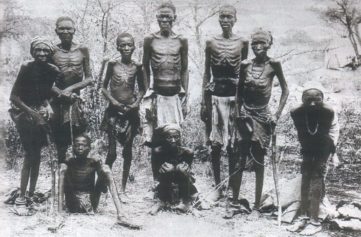Sub-Saharan Africa’s accelerated economic growth over the last decade has been well documented. Feted as the next boom market, especially with the backdrop of the economic slowdown in the West, there has been a tendency by many commentators to hail it as the last frontier for growth.
When I attended the African Development Bank’s summit in Tanzania for the launch of this year’s ‘African Economic Outlook’ (AEO) report, there was a huge sense of optimism about Africa’s economic trajectory. Yet I could not help but wonder whether this was somewhat over-stated.
Much was said about Africa’s decade of growth. The AEO report contended that Africa’s resilience following the 2009 global recession meant that the continent’s growth prospects remain highly positive. Yet less mention was made of how African governments are actively rebuilding their fiscal buffers, which were deployed to cope with the impact of the global recession on their domestic markets. Less still was discussed about what has been done to ensure that African countries diversify their export bases. I also found the discussions on how intra-African trade can be boosted to be disappointingly vague, and I left with several questions unanswered.
The recent report released by the ratings agency, Standard & Poor’s (S&P), put the economic vulnerability of African countries back into focus. According to S&P, China is set to shift from an investment-led to a consumer-led growth model. Having developed its production capacity over the past two decades, the country is now capable of producing domestically more consumer goods as a proportion of its overall consumption. Although the speed at which China’s rebalancing will take place is uncertain, the shift to a consumer-growth model is associated with slowing GDP growth, which has already started.
According to the country’s National Bureau of Statistics, China’s GDP growth will slow from 9.2 percent in 2011 to 8.5 percent in 2012. This matters to Africa because its exponential growth since 2000 has been in tandem with China’s economic boom. Since China’s economic expansion over the last two decades has been mainly investment-led, investment spending by China’s authorities concurrently boosted the country’s appetite for commodities sourced in Africa. This demand precipitated a surge in international prices between 2000 and 2011, and it also improved Africa’s terms of trade, resulting in what became the continent’s own decade of growth.
Yet S&P reports that since 2005 the Chinese government has been fostering a gradual rebalancing of China’s growth. Although the 2009 recession delayed this – the stimulus implemented by the government focusing on infrastructure spending – China’s rebalancing will inevitably take place. The S&P report casts fresh doubts as to whether, contrary to what the AEO report concludes, the growth of African economies is sustainable. African economies in their present state remain highly dependent on their trade with China and none will be immune to the consequences of reduced demand.
According to S&P, for every 1 percent rise in China’s GDP growth, the GDP of low-income African countries like the Democratic Republic of Congo (DRC), Guinea, Mali and Senegal has risen by 0.3 percent. For middle-income countries like Angola, Côte d’Ivoire and Sudan, a 1 percent rise in Chinese GDP has equated to a 0.4 percent rise in their GDP growth.
The boom in China’s capital spending in the past led to a strong increase in imports of metals and minerals. So the African countries that will be most affected by China’s rebalancing will be the metal and mineral exporters. Thus the DRC, South Africa and Zambia are most at risk.
Although oil exporters like Angola, Cameroon, Congo and Nigeria will be less affected in the short term, as Chinese demand for energy products will continue to be underpinned by the growth in its domestic auto markets, they still face serious risks as the changing composition of China’s imports will leave them vulnerable…
Read more: All Africa


